Read this Bhutan travelogue written by Jayanthi Chandrasekaran that mesmerises you to take a tour to this beautiful country. Know where the traveller visited and get detailed insights on these Bhutan’s must-visit places.
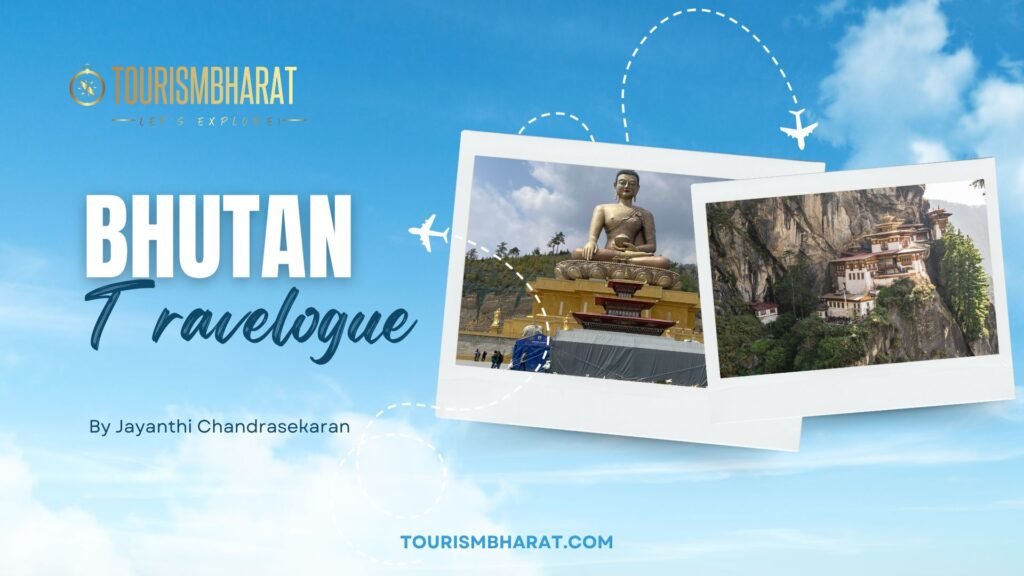
Bhutan, with its soaring mountains and pristine forests, captivates you even as the plane approaches the Paro International Airport. Just before landing, the pilot makes a cautionary announcement of a reassuring nature that there is no need to panic when you see the mountain up close in your windows and that the landing procedure is well-understood and practised. Indeed, the manoeuvring onto a short runway between two 18,000-foot peaks requires both technical knowledge and nerves of steel. It was a matter of pride for us to hear the lady pilot’s voice with an Indian accent, assuring us that we are in safe hands.
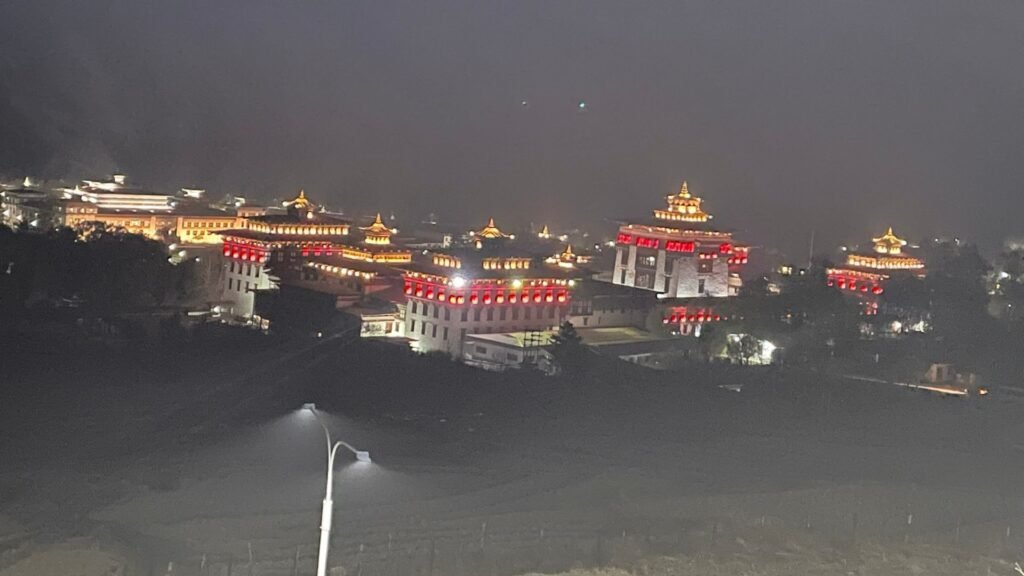
Bhutan has ended decades of free entry for Indian tourists, so we paid the Sustainable Development Fee (SDF) at the immigration office, which came to Rs. 7200 for six nights of our stay in the country (Rs. 1200 per night). Yes, Bhutan is not a destination for budget travellers. We had a tailor-made itinerary in place with the help of a local person for our stay and sightseeing, besides hiring an SUV with a driver and a guide. Broadly, we covered four beautiful areas of Bhutan, namely Thimphu, Punakha, Phobjikha and Paro. It was a charming springtime evening as we landed in Paro from Guwahati. Nestled among majestic mountains, Paro is picturesque and serene. But the sights of Paro had to wait for later as we headed to Thimpu, the capital city of Bhutan, about an hour and a half away, for our first night stay. The entire route was scenic, overflowing with natural beauty.
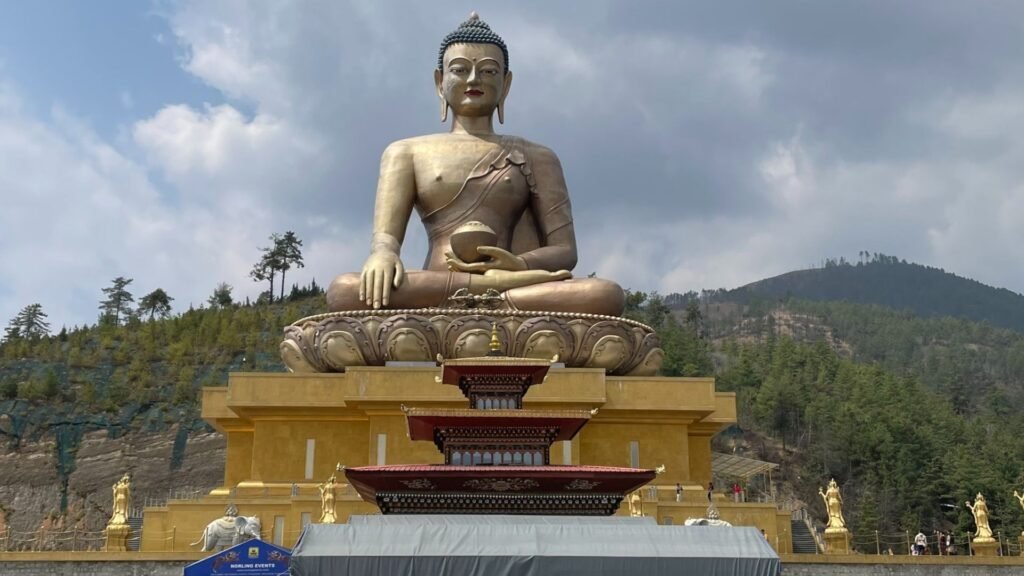
In Thimpu, the first thing that strikes you is that although there are a lot of cars on the road, yet no traffic lights and driving is orderly, devoid of road rage. Our first visit was to the Buddha Dordenma (Great Buddha), a gigantic Buddha statue, over 50 meters tall, on top of the mountain, overlooking the Thimpu valley. The statue is made of bronze and gilded in gold, giving a majestic glow and can be seen from various parts of Thimpu. ‘Buddha point’ as it is known locally, offers stunning panoramic views from the top of the hill, besides its deep cultural and spiritual significance. On the way down, Sangayang View point at an elevation of 2685m offers a breathtaking panoramic view of Thimpu city and its surrounding mountains.

The National Memorial Chorten is one of the most visited religious structures in Thimpu, constructed in memory of the third King of Bhutan, Jigme Dorji Wangchuck, initiated by the queen mother. The Tibetan style Stupa with its golden spire on top features elaborate mandalas, statues and a shrine dedicated to the popular king. The giant prayer wheels housed on the left side of the entrance and a beautiful garden in front add to the charm of this iconic chorten.
ALSO READ: Enchanting Cliffs in Emerald Isle – The Cliffs of Moher in Ireland!
ALSO READ: Dudhsagar Falls: Nature’s Hidden Gem in Goa!
ALSO READ: Karwar, Where Time Stands Still
ALSO READ: Cu Chi Tunnels, Vietnam – Where You Crouch and Crawl
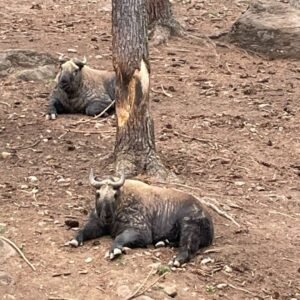
Royal Takin Preserve Centre houses the national animal of Bhutan, Takin, which has the face of a goat and the body of a cow. Although they are of no economic value, it’s heartening to see them being tended to in this former mini zoo, as the Takins refrained from inhabiting the surrounding forest even when set free.
ALSO READ: Angkor Wat – If Only Stones Could Talk, They Would Sing
ALSO READ: Bewitched in Bangkok – Travelogue by Jayanthi Chandrasekaran
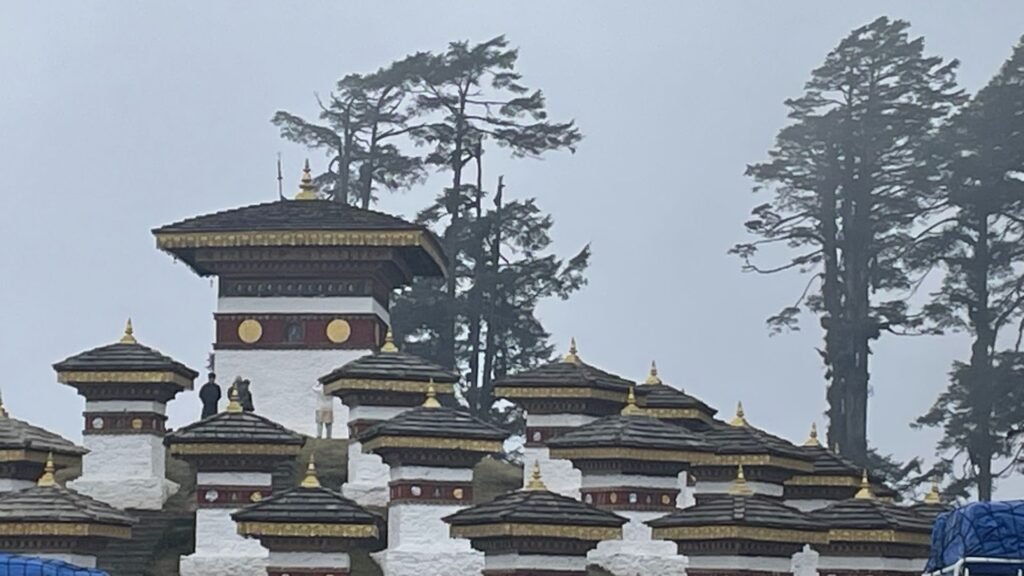
The road from Thimpu to Punakha passes through Dochula Pass, where 108 Memorial Chortens (stupas) are located. This is a historical landmark built to honour the bravery and sacrifice of the soldiers who perished during the war against insurgents. Later, we trekked through the pine forests of Phobjikha valley and reached a tent resort where our stay was memorable, with peace flowing all around like a stream. An added bonus was the mist-covered spectacular sunrise. The valley is home to endangered black-necked cranes, which were elusive to us.
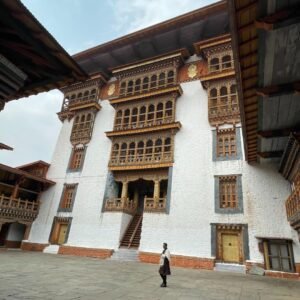
The drive through Punakha valley is mesmerising as we pass through the vast expanse of verdant paddy fields, thanks to the most prized rivers of Pho Chu and Mo Chu. The Punakha Dzong itself is a masterpiece of Bhutanese architecture, situated at the confluence of the two rivers. The mighty Dzong used to serve as the capital and seat of government until the mid-1950s. Now it serves as the winter residence of the dratshang (official monk body). We felt honoured to witness the dance of the monks, which made the ambience festive and spiritual. The pillared assembly hall in the Dzong houses a massive gold statue of Buddha, and the exceptional murals depicting Buddha’s life were a feast for the eyes.
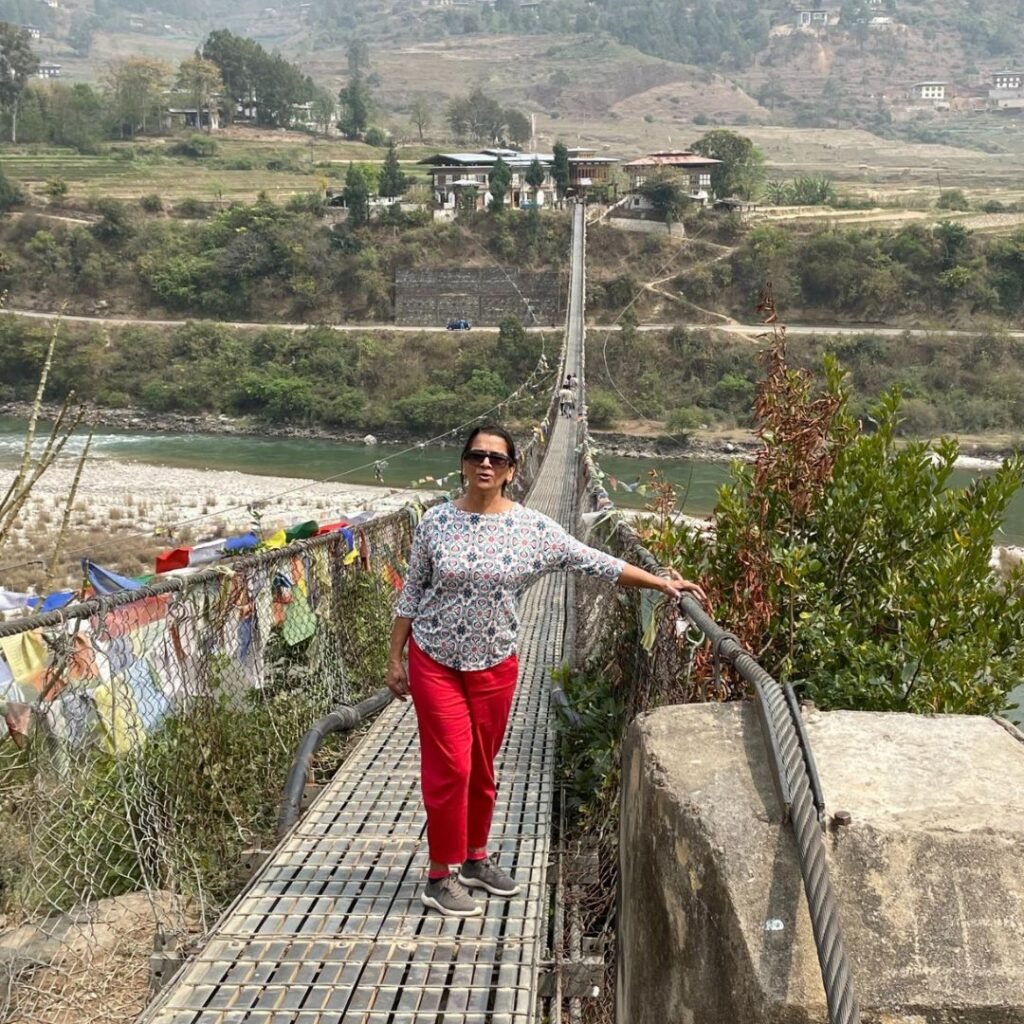
Punakha also boasts one of the longest suspension bridges across Pho Chu river, strengthened by iron chains and metal netting. It offers a great view of the glistening stream below.
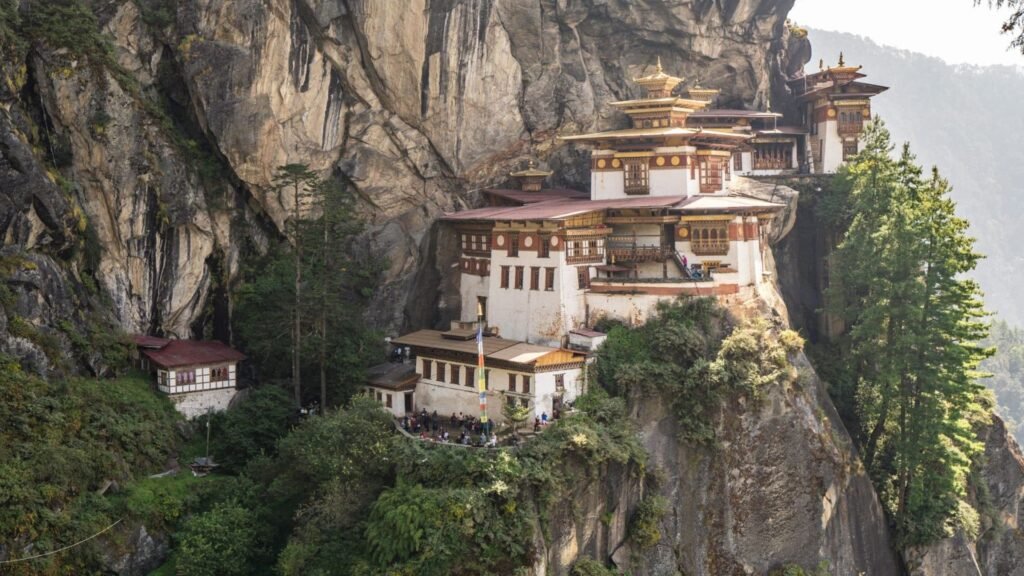
The Rinpung Dzong in Paro, located on the face of a hill, is a beautiful Buddhist monastery and fortress with intricate murals and interesting brightly coloured lanterns with pieces of fabric in a rainbow gradient. The Paro river, meandering through Paro, is picturesque and inviting to wet the feet in its freezing waters. The Paro circular fort known as Ta Dzong was a watch tower earlier, and has now been converted into a museum. It’s a ‘must-visit’ place for its cool mud structure of seven stories and delightful artifacts. Our last stop was the iconic Paro Taktsang, or Tiger’s Nest Monastery, perched on a cliff 3,000 feet above the valley.
In Paro, besides shopping, we indulged ourselves wearing the Bhutanese dress known as Kira, a patterned ankle-length skirt wrapped tightly around the body and topped with Wonju, a short loose blouse. The men wear Gho, which is a knee-length robe with long sleeves paired with long socks and shoes. The natural beauty and the warm smiles of Bhutanese people guided by the philosophy of Gross National Happiness, (which places well-being above material wealth) will stay with us for a long time.
ALSO READ: The White Temple, Northern Thailand – Pristine and Bizarre
ALSO READ: Keep Austin Weird – Travelogue by Jayanthi Chandrasekaran
ALSO READ: Bali, Breeze on the Face, Salt in the Hair
ALSO READ: The Modhera Sun Temple, A Sculpted Serenade

Wow, Jayanti di! You have captured the essence of the Bhutan journey so beautifully. Reading your words felt like I was reliving each moment — from the scenic beauty to the soulful experiences, everything came alive so vividly. Your way of expressing the journey is truly heartwarming and wonderfully written!